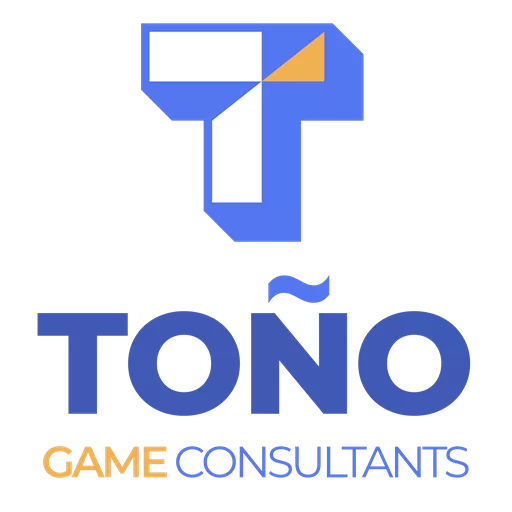Game development is exhilarating, but it can also feel like riding a rollercoaster with no safety bar. One wrong turn and you’re caught in the dreaded death spiral, a cycle of missed deadlines, half-finished features, and mounting stress. (See: Mastering the Triple Constraint in Project Management)
The good news? Recognizing the spiral is the first step to breaking free.
What’s the Death Spiral in Game Dev?
At its core, the death spiral happens when teams lose control of scope and delivery. Features keep shifting, tasks are so oversized they never get finished, and the sprint ends with nothing truly “done.” Without clear acceptance criteria or visibility, teams scramble, patch problems, and push deadlines forward. Each quick fix only fuels the spiral.
This isn’t just a game dev term. The phrase “death spiral” comes from aviation (“graveyard spiral”), a pilot becomes disoriented and keeps correcting in the wrong direction, until the plane crashes. Business borrowed the metaphor to describe projects where poor decisions compound until collapse. In game development, with its high stakes and constant discovery, the spiral can form faster than most teams realize.
What Kicks Off a Death Spiral in Game Dev?
Now that we know what the death spiral is, let’s look at what actually sets it in motion.
Spoiler: it rarely starts with a catastrophic failure. More often, it’s a single loose thread, an XXL story, a moving goal, or a shortcut, that unravels the whole project. Deliveries get slower, milestones slip, and eventually… progress grinds to a halt.
Here are the most common culprits:
| Cause of the Death Spiral | What It Looks Like in Game Dev |
| Overambitious scope | Dreaming big is fine, but trying to build an open-world, multiplayer, VR epic with dynamic weather all at once is a recipe for paralysis. Big goals need to be broken into small, finishable chunks—or they’ll drown the team. |
| Poor time management | Missed deadlines pile up, milestones slip, and the pressure leads to corner-cutting. Each delay compounds, and velocity slows until the team is sprinting in place. |
| Inadequate planning | Starting without a roadmap means constant miscommunication and chaos. Without clear steps, even small wins don’t add up, and the team feels like they’re going in circles. |
| Feature creep | One “small” addition balloons into five more. The backlog grows endlessly, but nothing gets completed. Eventually, the team spends more time juggling requests than shipping. |
| Technical debt | Quick hacks become permanent. Bugs multiply, systems clash, and fixing one issue breaks three others. Over time, more effort goes into firefighting than building new features. |
| Burnout | Endless crunch drains creativity and morale. Productivity drops, mistakes rise, and the spiral accelerates as tired developers struggle just to keep up. |
| Moving goals | Vague or shifting objectives mean no one knows what “done” really means. Stories stay open, sprints end empty, and delivery slows to zero. It’s like playing a game where the rules keep changing. |
Estimation doesn’t need to be a guessing game.
Want a practical way to keep your team’s sizing accurate? Grab our free Time Estimation Tool, a lightweight template that shows you how to use points and Planning Poker to size work predictably. It’s designed for game dev teams to cut through the chaos and forecast milestones with confidence.
How Does the Death Spiral Take Over a Project?
Once it starts, the death spiral feels like a whirlpool: progress slows, then stalls, and eventually hits zero. Here’s the typical pattern:
-
Initial crisis → A small misstep, an XXL task, vague goal, or missed deadline throws the schedule off. This is where scope creep usually sneaks in, the more you try to add mid-sprint, the less actually gets finished.
-
Reactive fixes → Quick patches pile up, adding technical debt instead of solving root problems. This kind of cargo cult, copying quick fixes without addressing fundamentals—only accelerates the spiral.
-
Mounting pressure → To catch up, the team crunches. Stress rises, mistakes multiply.
-
Quality sacrifices → Features get rushed, testing skipped, and the game’s integrity erodes. It’s a classic clash with the triple constraint: time, scope, and quality can’t all win when pressure mounts.
-
Morale dips → Burnout hits. Productivity drops. Creativity dries up.
-
Escalating problems → Code becomes brittle, features harder to integrate. Each “fix” slows delivery further.
-
Vision lost → Shipping something replaces shipping the right thing. The original design fades under survival mode.
The result? Deliverables slow to a crawl until nothing “done” comes out of a sprint. That’s when the spiral is fully in control.
Fallout When a Project Enters the Spiral
The consequences ripple far beyond the sprint board:
-
Delays → Launch dates slip, frustrating players and straining publisher/investor trust.
-
Costs balloon → Burned budgets force cutbacks, shrinking resources mid-project.
-
Quality suffers → Bugs, glitches, and missing features damage the studio’s reputation.
-
Team burnout → Turnover spikes. Expertise walks out the door.
-
Long-term drag → Even post-launch, firefighting consumes resources, preventing new growth.
A Death Spiral in Action (Hypothetical)
Picture a small RPG studio. Early progress looks solid, but a core mechanic proves trickier than expected. Instead of re-scoping, leadership pushes deadlines harder.
Quick fixes mount, morale drops, and burnout creeps in. Deliverables shrink until nothing is completed by sprint’s end. Desperate, the studio ships anyway, only to face negative reviews, buggy gameplay, and ongoing patch cycles that drain resources long after release.
One small slip snowballed into a full spiral, leaving the studio with lost trust, a broken team, and a compromised game.
How to Avoid the Death Spiral
Dodging the spiral isn’t magic—it’s discipline. Here’s what works:
-
Break tasks small → XXL items kill visibility. Split work until it’s truly finishable. Good Scrum practice insists on small, clear increments.
-
Define done → Clear acceptance criteria stop moving goals from derailing progress. This is where understanding the balance of Scrum Master vs Product Owner roles is critical—one protects process, the other defines value.
-
Use the right tools → Jira, Trello, GitHub, Slack—anything that improves visibility and coordination.
-
Refine & estimate → Backlog refinement + Planning Poker (Scrum Master–led) keeps scope realistic and effort visible. Learn why time estimation works better with points than with hours.
-
Release planning → Track velocity with burn charts. You may not forecast the whole game, but you can predict milestones.
-
Protect morale → Celebrate small wins. Respect balance. Burnout fuels spirals.
-
Stay transparent → Regular updates, clear priorities, and honest discussions build resilience.
The death spiral thrives on hidden work, vague goals, and reactive chaos. Cut stories small, keep definitions clear, and give your team visibility into real progress, and you’ll break free before the spiral takes hold.
Closing: Production as the Antidote to Death Spirals
Death spirals don’t happen overnight, they build up from moving goals, unclear “done” criteria, and tasks too big to show progress. But they’re not inevitable. With strong production practices, clear backlog refinement, realistic sizing, and disciplined scope control, you can stop the spiral before it starts.
This is where Production shines: turning chaos into clarity, guiding teams to deliver predictably, and keeping morale from collapsing under pressure.
Want to know how healthy your production really is? Take the Game Production Health Quiz and see where your process is strong, and where hidden risks might be pulling you toward the spiral.
FAQ: Game Dev Death Spiral
1. What is a death spiral in game development?
It’s when a project falls into a cycle of missed deadlines, rushed fixes, and burnout. Progress slows until little or nothing gets completed, and each “solution” only makes things worse.
2. What causes a death spiral?
It usually starts small, an oversized task, unclear goals, or weak planning. Over time, moving targets, scope creep, and lack of visibility compound the problem.
3. How do Scrum and Agile practices help prevent it?
Keep tasks small, set clear definitions of “done,” and refine regularly. A healthy process, strong leadership, and open communication all reduce the risk.
4. Can better time estimation stop a death spiral?
Yes. Estimating effort in ranges or points, rather than hours, gives teams realistic forecasts and avoids fantasy deadlines. Combined with backlog refinement, this helps keep delivery predictable.
5. What’s the fallout if a project stays in the death spiral?
Delays pile up, costs increase, quality drops, and morale suffers. Left unchecked, the spiral can derail the vision of the project entirely.


